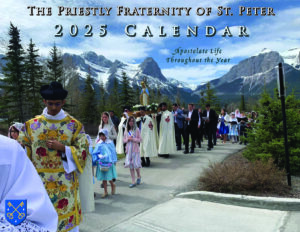Privileged Victims
When certain words get thrown around a lot in the media, it is usually because the common understanding has been somewhat confused, and someone is trying to impose a new meaning on them.
This is what we seem to find happening with the word privilege.
The word finds its origin from the Latin privilegium, its root word being lex, meaning law. Together with the prefix “privi,” privilege would indicate then a law that applies to an individual. A basic example of a privilege would be when older children have later bedtimes than younger ones; in this case, age affects the application of the “law” of bedtime in the home.

Another example would be driving, where a person must not only be of appropriate age and maturity, but also has demonstrated satisfactory knowledge of the rules of the road and a competency to safely operate a vehicle.
These basic examples show that privileges are different from rights. Whereas a right indicates a claim to something based on justice, a privilege indicates a potential qualification to something which may or may not be received: that is, privileges are earned.
Not everyone over sixteen should drive. But anyone over sixteen is expected to work honestly, both in justice to his employer and in compensation for a rightful wage. And while rights and privileges both carry the potential to be lost, privileges generally can be revoked for broader reasons. With these distinctions in mind, qualifications that determine privileges should not be deemed as arbitrary.
In other words, the qualification must fit the privilege.
There are no grounds for letting only the blond-haired children stay up later, regardless of age, and we can expect grumbling from the other children in such a circumstance.
However, while avoiding silly things like that, there is a significant danger when privileges become viewed as rights; something is universalized that should not be. Qualifications are readily manipulated to fit a supposed right based on the popular social narrative.
For instance, if a cause was introduced from some political group that proclaimed driving as a right for everyone, the blind could be stoked to rise up and claim that they have been oppressed since the invention of cars, or even horse-drawn buggies. A myriad of programs would then be introduced to make everyone sensitive to the driving rights of the blind, and new cars developed at great expense for this newly-found and newly-defined right to be realized.
Any person with common sense would be bewildered by this, because driving was always seen as a privilege, and being able to see was one of the many qualifications for it.
However, this is quite different than if a person is denied her legitimate right to a basic education on account of being blind. Again, sensible people would favor the allocation of resources in an effort for this to be corrected. (Similarly, we must also remember that the opposite of a legitimate right cannot be claimed as a right itself, nor a privilege; thus there is no such thing as a “right to an abortion.”)
Only by blurring the important distinction between privilege and right are fists raised and cities burned to throw off some sense of oppression that is readily exploited by other elite forces to upset the social order. Many jump on the bandwagon without realizing the implications, promoting a cause they never would have in calmer times. Suddenly everyone becomes a victim.
How many in the mob called for our Lord to be crucified who would never have done such a thing unless, having lost circumspection, they sadly got caught up in the heat of the moment?
September 14, 2020

X-Ray of the Priest: Interview with Fr. Armand de Malleray
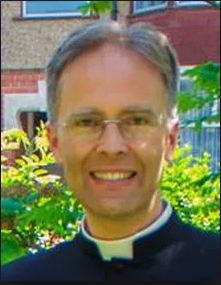 We are pleased to present an interview with Fr. Armand de Malleray, FSSP, of Warrington, England on his new book X-Ray of the Priest in a Field Hospital (Arouca Press, 2020).
We are pleased to present an interview with Fr. Armand de Malleray, FSSP, of Warrington, England on his new book X-Ray of the Priest in a Field Hospital (Arouca Press, 2020).
+ + +
Q: Thank you, Father, for taking time to answer some of our questions. First of all, who is this book aimed for? Just priests, or the laity as well?
A: Priests first. I give retreats to priests every year, most of them diocesan. They are fond of discovering the riches of the traditional philosophy, theology and spirituality. Of course most priests would know some of this teaching, but because of our traditional formation, we FSSP priests are in a good position to explain the beautiful connection between liturgy, philosophy, theology and spirituality. It’s a priestly package. It makes sense to priests who come across it. Even though it’s a bit daunting at first, seen from without, it rings very true and gives hope to priests who struggle in their ministry and in their priestly identity.
But X-Ray of the Priest is also for the laity. Lay people support us clergy through their alms, prayers, sacrifices and affection – as we know well with the 7,000 members of the Confraternity of St Peter, among others. The more the laity understand what the priesthood is about, the better they can safeguard, encourage and follow their pastors.
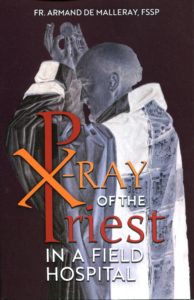 Q: The beginning of your book is an arresting and sobering description of 14 Stations of Priestly Apostasy, set against the backdrop of the 2016 film Silence. How does someone with the grace of the priesthood fall so low as to gravely sin, or even commit crimes?
Q: The beginning of your book is an arresting and sobering description of 14 Stations of Priestly Apostasy, set against the backdrop of the 2016 film Silence. How does someone with the grace of the priesthood fall so low as to gravely sin, or even commit crimes?
A: There have been bad priests from the beginning, starting with Judas. What one could term the ‘Tridentine’ model of the priesthood offered customs and rules protecting the priest in his daily life. It was abandoned in the 1960s. We FSSP priests are privileged to use again most of these practices. They don’t make us impeccable, of course, since we are sinners like every one else. But they help us exercise prudence. Philosophers say ‘Agere sequitur esse’ – or ‘One behaves according to who one is’. Many modern priests have a very hazy understanding of who they are as priests. Priests are other Christs whose souls were substantially modified through the imprint of the priestly character, enabling them to posit sacred actions such as, chiefly, offering the Holy Sacrifice of the Mass and reconciling penitents in Confession. Everything else in what a priest does is secondary. The more a priest realizes this truth, the more fulfilled he is in his relationship with God, hence the less gravely he is likely to fall.
Q: You cite a very extraordinary man named Karl Lesner, who was actually ordained a priest in the Dachau concentration camp. What lessons does his life offer us today?
A: Our FSSP European seminary in Wigratzbad is located in Bavaria, not far from the concentration camp of Dachau. It brought Karl’s virtues closer to us. Karl was an ordinary young man. Nazi persecution tested his priestly vocation to its utmost limit. By God’s grace, he triumphed. I think his traditional formation had given him a very clear grasp of what the priesthood is about. Union with Christ is key, especially in times of trial. This applies to all men, but especially to priests, empowered and mandated by Christ and His Church to be models of the flock and shepherds of souls. Karl persevered in answering his priestly call even amidst the horror of Dachau (the largest priestly cemetery in the world). His example proves fidelity possible for any priest, even though parish life is difficult at times; and despite the opposition from the world to priestly sanctity.
Q: You make a fascinating analogy between the Shroud and the unfolding or development of doctrine. Why does God reveal doctrine gradually, instead of all at once?
A: We humans live in time. Adapting His communication to our condition, God reveals Himself to us gradually. He did so in the Old Testament through the Patriarchs, the Prophets and kings. He continues to reveal Himself by stages to us in the Christian era. He wishes our free collaboration. That is why He endowed us with understanding and free will after His image and likeness. Our interest and perseverance please Him. By analogy, it is like a father who provided a beautiful and costly present for his little boy: unwrapping it takes time; but that time is not wasted, rather, it demonstrates love shared. Only, in the case of God the Father, His Gift to us is His Son, Jesus.

Q: In light of your description of the “sensus fidei” as the sheep who follow the Good Shepherd to know and hear His voice, how do we balance obedience to the deposit of the faith with obedience to the clergy, when these appear to conflict?
A: We have highly reliable books to guide us, such the Catechism of the Council of Trent, the various traditional books of theology and spirituality (e.g. by Fr Reginald Garrigou-Lagrange OP) and so many enlightening encyclicals such as Casti Connubii, Mystici Corporis, Fides et Ratio or Ecclesia de Eucharistia. God expects us to use the intellect He gave us to assess whether a homily or a parish bulletin is consistent or not with what Holy Mother Church has believed and professed everywhere and always. We may respectfully request clarification from our pastors if some of their statements are unclear, or even inaccurate. The Tenth Rule for Thinking with the Church by St Ignatius Loyola recommends:
“To be eager to commend the decrees, mandates, traditions, rites and customs of the Fathers in the Faith or our superiors. As to their conduct; although there may not always be the uprightness of conduct that there ought to be, yet to attack or revile them in private or in public tends to scandal and disorder. Such attacks set the people against their princes and pastors; we must avoid such reproaches and never attack superiors before inferiors. The best course is to make private approach to those who have power to remedy the evil.” If a scandal is obvious and grave though, a quicker reaction might be needed, if prompted by the Spirit of Truth and Charity.
Q: You devote quite a bit of your book to the feminine archetypes of Eve and the Blessed Virgin, and to bridal imagery. How do these connect with the priesthood?
A: Our Lord is the Bridegroom and Holy Church is His mystical Bride. In the sacrament of Matrimony, husband and wife echo this mystical complementation. The priest stands and acts in the Person of Christ in relation to the particular flock entrusted to his care. Priestly celibacy is best understood in this light. The priest renounces the legitimate joys of marriage and family so as to manifest his total availability in the service of the group of souls put under his responsibility by his ecclesiastical superior.
Q: The end of the book drives home the historical importance of religious orders. Do you see a need for their revival? And what is the young laity’s role in that?
A: The fourth of the Rules by St Ignatius quoted above states: “To have a great esteem for the religious orders, and to give the preference to celibacy or virginity over the married state.” I am sure that this is a bit shocking even for traditional Catholics. We need to recover the precedence of the consecrated state over married life. Sure, we need many strong Catholic families. But no less do we need to revive failing religious orders. In fact, both grow together: strong religious life makes strong families, and vice-versa. When reviving a dying monastery doesn’t work, then by God’s inspiration and grace, the young people must found new orders. Needless to say, they will prosper only to the extent in which they will draw from the wisdom and experience of the glorious orders of old such as the Benedictines, the Dominicans, the Carthusians, the Carmelites, the Jesuits etc.
+ + +
Fr. de Malleray’s X-Ray of the Priest in a Field Hospital is available from Fraternity Publications. Also by the same author is a book on the Holy Eucharist with a foreword by Bishop Athanasius Schneider: Ego Eimi – It is I, Falling in Eucharistic Love: Reflections on the Sacrament of the Most Holy Eucharist.
September 11, 2020

St. Peter Claver and his Interpreters
September 9th in many countries marks the feast of St. Peter Claver, who won the honors of the altar by tending to Africans being trafficked in the Atlantic Slave Trade. Claver has been specially honored across the diaspora as a great patron saint, and the study of African languages played an absolutely crucial part in his holy work.
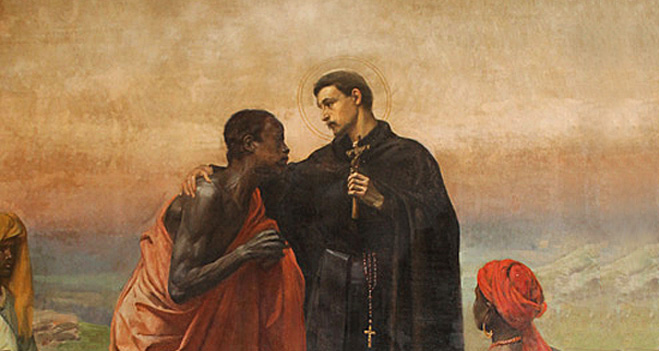
Claver’s predecessor ministering to the Africans at Cartagena was the Jesuit Alonso de Sandoval, who had counted 70 different languages among them. Slave-masters refused to help the Jesuit find interpreters, so he was compelled to walk around the entire day looking for them. Exhausted by this, Sandoval compiled and used a little notebook, alphabetically listing interpreters’ names and addresses so that they could be easily tracked down. And even after all that, some interpreters, whether due to lack of understanding or lack of interest, didn’t faithfully convey what he told them.
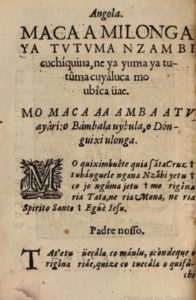

For his part, St. Peter Claver tried to remedy the situation by learning “the Angola language”, one of the primary languages spoken by the slaves at this time. This was likely the language we know today as Kimbundu, which is spoken by around 2 million souls in modern Angola, and among the first Bantu languages to be published and studied.
We do not have a great deal of information about Claver’s progress in the language, but that is perhaps the way he wanted it. For he seems to have relied not so much on his own scholarship, but on surrounding himself with a set of trustworthy African interpreters whose linguistic prowess proved absolutely indispensable to his ministry. Many of them spoke multiple languages, and one was even named after the famous Augustinian linguist Ambrosio Calepino and described as follows in 1638:
“One of them was named Calepino for knowing eleven [languages], through which God’s paternal providence evidently fights and shows how much He esteems and protects this occupation and saintly ministry, giving him to this school as a singular insignia and honor.”
Some 30 interpreters are named in the documents of the time–some of whom were consulted in Claver’s Processes of Beatification and Canonization. And from them we get a little taste of the humility of the saint.
Francisco Yolofo, a Wolof interpreter from Senegambia, related to the commission that during catechism sessions, Father Claver would have the interpreters speak from tall chairs with armrests, while he sat on a clay pot or on a piece of wood. Some European officials became angry at Fr. Claver for this arrangement, saying it was not right for the black interpreters to be seated in positions of authority over him. But the priest insisted that the interpreters were more necessary in this work than he was, and that it was vital for the catechumens to respect the catechists’ authority and believe what they said.
Toward the end of Claver’s life, his health did not permit him to go to the ships in the harbor. So he sent the interpreters by themselves–allowing them to take on his life’s work upon their own shoulders.
It is perhaps too easy for us to simply read the hagiographical accounts of thousands and thousands of Baptisms and forget that many of these were beset by seemingly insurmountable complications of language. We may think of a slave in chains bowing his head to receive the sacred waters, but we don’t generally think of the chains of interpreters required to bring him to that sacramental moment.
Certainly, as Claver himself said, it was charity and kindness that won hearts at first, not eloquence: “This was how we spoke to them, not with words but with our hands and our actions.” But we also know that the canons of the Church do not allow Baptism without prior instruction and willing acceptance–for which communication is absolutely essential. The food and water that Claver brought could only refresh bodies, not souls.
So while we honor the way St. Peter Claver and his African interpreters softened the hearts of his catechumens with physical comforts, let us remember, too, the prodigious intellectual labors involved, which opened those catechumens’ minds to a more glorious freedom than could ever be experienced on earth.
September 9, 2020

Maria SS. della Lavina: Torrents of Water and Drops of Milk
by Fr. William Rock, FSSP.
If one were to visit Cerami, Sicily on September 7, one would encounter young women wearing red tunics, harkening back to the time the island was Greek, and young men wearing blue shirts and black pants. Dressed in this festive attire, they are assisting at the annual Maria SS della Lavina celebration.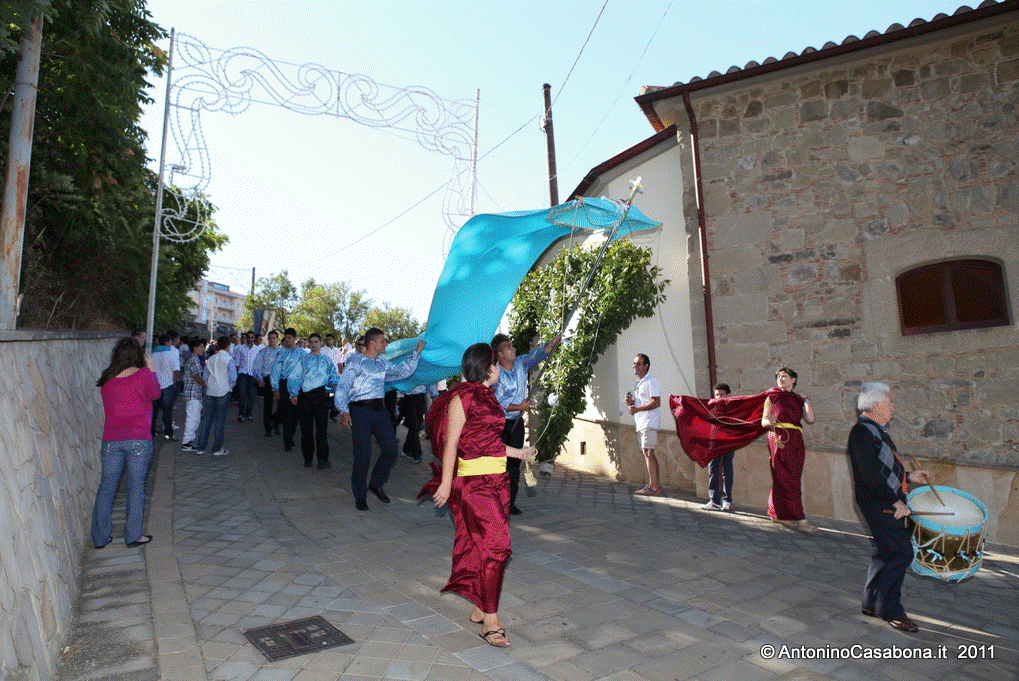

Devotion to the Maria SS della Lavina image is traced back to a Byzantine icon which was brought to the area at some unknown time in the past (several theories exist which attempt to explain the arrival of this Byzantine icon in Sicily). The icon, as it shows Our Lady suckling Our Lord, is interpreted by the locals as an image of Our Lady of Graces [la Madonna delle Grazie]. Such depictions of Our Lord and Our Lady are ancient. “The earliest images of Mary nursing the Child are of Coptic [Egyptian] and Palestinian origin…From the Monastery of Saint Sabas in Palestine, the composition spread to Italy (Rome, Santa Maria in Trastevere) and, via Serbia, reached the monasteries of Mount Athos. In the seventh century, during the struggle with the Iconoclasts, Pope Gregory II (d. 731) wrote to his adversary, Emperor Leo III the Isaurian: ‘Among the icons to be worshiped there is also an image of the Holy Mother holding our Lord and God in her arms and nursing him with her milk.’” (Icons and Saints of the Eastern Orthodox Church, pg. 183)
The original Maria SS della Lavina icon was, according to the harmonized, pious local tradition, housed in a convent of Benedictine nuns. During a time of danger and iconoclasm, the icon was nailed to a beam in the ceiling in order to protect it. When that danger had passed, the icon was left in its hiding place. Eventually the nuns moved to a different location, leaving the icon behind, and the monastery fell into disrepair.

In the mid-seventeenth century, it is held that Our Lady appeared several times in a dream to one of the Benedictine nuns and directed her to request that the local Archpriest unearth from the ruins of the old monastery the sacred icon. The request was received with skepticism by the priest.
During the third apparition, Our Lady stated that because of the skepticism of the priest, she herself would bring the icon to light. Soon, a torrential rain fell which caused flooding. The day after, a farmer was leading his mule near the torrent caused by the rainfall. Inexplicably, the mule then stopped and, after striking the mud with his hoof, knelt. The farmer, struggling to get his mule to move, drew by this commotion the attention of those who were nearby. After digging, and to the astonishment of those present, the icon of the Blessed Virgin and the Christ Child was found buried in the mud. (It is claimed than an imprint of the mule’s hoof can still be seen on the sacred icon.)
As soon as the Archpriest heard of the episode, shaken and repentant, he made the bells ring out and, together with a large crowd of faithful, went to the site and the sacred icon was recovered with great devotion. In memory of this event, in May, Cerami celebrates the Feast of the Encounter and the icon is carried in procession.

From this time, the image received the title of “Lavina” from u lavinaru, which means in the local dialect “torrent,” a reference to how the image was discovered after the torrential rainfall carried the image out of the ruins and buried it in the mud caused by the flooding.
The pious tradition also tells us that the discovery of the icon was crowned by some miraculous events: one of the best known is of a certain Giuseppe, blind for thirteen years, who, as soon as the news of what had happened reached him, was led by his relatives to the image, and, having kissed the holy icon, regained his sight.

While the miraculous icon itself was placed in the church of the new covenant, a chapel was built on the site where the icon was found. Due to damage received over the years, especially during the Second World War, this chapel has gone under several renovations since its original construction. Within this chapel was placed a newly produced painting (17th century) which depicted the same scene written on the icon, that of Our Lady nursing Our Lord. The new image along with the new chapel received the name of Maria SS della Lavina also, thus linking them with the devotion shown to the miraculous icon. It is this second image, the painting, which is carried in procession during the September celebration.

Devotion to this image of the Virgin and Christ Child was brought to the United States by Italian immigrants. A Maria SS della Lavina Society was organized at St. Aloysius Church in Caldwell, New Jersey by the early 1900s which was legally chartered in 1912. This Society held yearly processions in the town originally with a banner and later with a painting. This painting, which still currently hangs at the church, was undertaken in 1934 by Mr. Onorio Ruotolo, founder of the New York City Leonardo da Vinci Art School.

Some may object to this presentation of the Virgin and Child on grounds of modesty. In our overly immodest culture, it is tempting to retreat into a puritanical position in this regard. Faithful Catholics, however, must ensure that they do not simply take a reactionary position, but should rather allow themselves to be formed in this matter by the perennial liturgical and devotional traditions of the Church. Such would do well to consider, for example, the Epistles read on the Thursday of the First Week of Lent and the Saturday of the Third Week of Lent and the Gospel assigned for the Saturday Mass of Our Lady during the Time After Pentecost in order to see what the Church allows to be read in her public liturgy and which she does not view as degrading to the dignity of the sacred action. Such should consider also the Marian hymn O gloriósa vírginum which is sung in the Divine Office. The first verse is as follows:
| O gloriósa vírginum, Sublímis inter sídera, Qui te creávit, párvulum Lacténte nutris úbere. |
O glorious of Virgins, Exalted among the stars, He Who created you, as a little one You suckle by your milk-filled breast. |
Drawing from the letter of Pope Gregory II, we can see that the practice of depicting the Virgin suckling her Child has existed in the Church for over 1,000 years. In Bethlehem, one can even find a Chapel under the name “Milk Grotto of Our Lady.” According to pious tradition, the Holy Family stopped at this site during the Flight into Egypt, and there, while Our Lord was feeding, a drop of Mary’s milk fell, and the floor of the cave turned white. Let faithful Catholics then allow their position on this matter, as in all others, be formed according to the mind of the Church as perennially expressed in her approved liturgies and devotions.
May God bless you all and may you have a happy and blessed Maria SS della Lavina Feast Day!
Sub tuum praesidium confugimus, Mater Lavinæ!
Fr. William Rock, FSSP was ordained in the fall of 2019 and is currently Assistant Pastor at Mater Misericordiae parish in Phoenix, AZ. Thanks are due to Msgr. Robert Emery, Pastor of St. Aloysius Church in Caldwell, New Jersey, for his support and permission to use parish media, Mr. Fabio Sturchio for his translation work, Mr. Antonino Casabona for granting permission to use his photographs, Mr. Franco Digangi for providing historical information and review, and Mrs. Santa Rock and Ms. Ashleigh Grenci for photography.
September 7, 2020

Cancellation Policy
We witness many things that are upside down and backwards being treated like they are right-side-up and forwards, and we see a tool used in this process that is known as the “cancel culture.”
Essentially, what the cancel culture does is use whatever bad it can drudge up from a person’s past in order to discredit and marginalize them, defining their entire life around that moment.
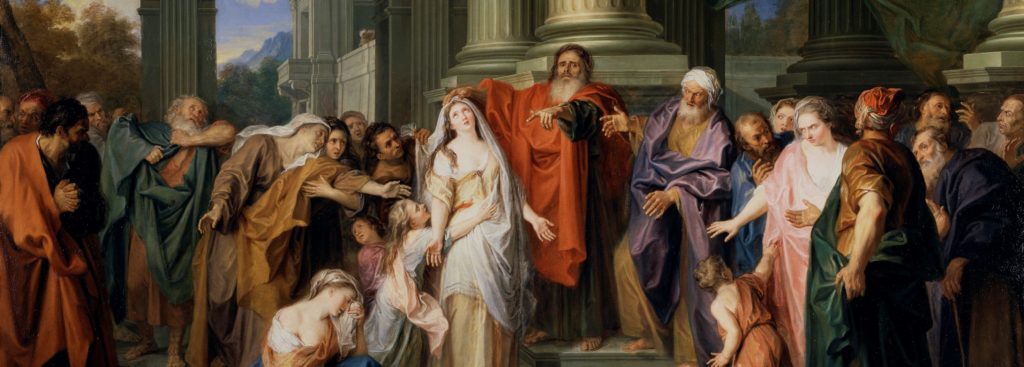
Especially in this age of the Internet and instant communication, it can be easy to isolate a questionable comment or incident someone made decades ago and then resurrect it out of context (or, for the less scrupulous, to simply make it up) in the attempt to assassinate a person’s character and cancel the person’s credibility. We watched this take place during Supreme Court Justice Brett Kavanaugh’s confirmation hearing; he survived the relentless onslaught, but damage was done to him and his family.
As we find ourselves resisting the “woke” state forming around us, we see that none of us are safe from this. We have all made plenty of mistakes in our lives; there are things in our pasts that we are not particularly proud of and wish to forget – and hope are never resurrected – and we can have genuine regret and compunction for them.
However, this idea of a cancel culture is actually nothing new; what we are facing nowadays is simply a hijacked and backwards expression of it.
The original cancel culture arose in the mind and heart of God.
It began minutes after the sin of Adam and Eve, when God promised a Redeemer (cf. Gen. 3:15), and it would be realized four millennia later when Christ came and canceled upon the Cross humanity’s eternal debt of sin, meriting for us the grace of forgiveness for all our personal sins.
Quite unlike our modern bloodthirsty cancel culture that seeks to assassinate and destroy the person, God’s cancel culture is based on mercy that flows from the Blood of Christ. It seeks to assassinate and destroy our sins while redeeming the person in return, filling us with His very life of sanctifying grace, so much so that He wishes to come and make His abode in our souls.
While the modern cancel culture tries to elicit and keep us in fear, God’s cancel culture is all about love and trust.
While the modern cancel culture tries to marginalize and admit only those who comply with its foolish party line, in God’s cancel culture all can approach, for, having been lifted up on the Cross, Christ wills to draw all to Himself.
No matter what may befall us in this life, regardless of the trials we may be asked by God to undergo, as Catholics we are citizens of heaven by Baptism and so must acclimate ourselves to the cancel culture characteristic of God’s Kingdom. Therefore, the good and frequent use of confession with true sorrow and a firm purpose of amendment is of great importance in our lives.
And that is where we find the most significant difference between these two cancel cultures.
Whereas the kingdom of “woke” strives to remember our sins, in the Kingdom of God, He chooses to forget them entirely.
September 4, 2020

Eyes on the Cross
The threats and attacks we see the Church facing from all directions make us realize that strength is needed to successfully endure these trials.
Nonetheless, how strength is displayed is of critical importance, as we can inadvertently contribute to the very thing we wish to eradicate. Some may feel that fidelity to the Church must always be demonstrated by militancy, by visible (and audible) resistance, finding fault with everything and being quick to accuse those of laxity who fail to display the same supposed rigor.
The harsh realities of what our Lord endured for our salvation and the role we have all played in them come to mind.
The Crucifixion is what happens when the best that God has to offer collides head-on with the worst of man. What our Lord said in word had to be tried under the worst possible conditions.
So when His hour had come, Christ went to the Cross willingly, intent on fulfilling the will of His Heavenly Father. By doing so, He validated everything He said and did and set the standard for belief in Him: If any man will come after Me, let Him deny himself, take up his cross, and follow Me. (Matt. 16:24)
Yet what may particularly strike us is the manner in which Christ met His Death. He was led as a sheep to the slaughter; and like a lamb without voice before his shearer, so He not opens his mouth (Acts 8:32).
But this happens after Christ first went out to meet the mob in Gethsemane, indicating that it was He who lays down His life: no one takes it from Him.
His total self-control and composure throughout the mock-trials and interrogations, answering only when necessary or speaking only when it was for the benefit of another soul, teaches us how to suffer well and in a way that yields the best results, although this may not be immediately apparent. Christ’s calm and unwavering insistence on the truth of who He is and what He came for would confound His enemies, evidenced by their screaming for Him to get down from the Cross right up to the last moment of His life.
Nothing exposes the hypocrisy of evil like the consistency of good.
And so while many of us may feel like there is little we can do about the trials plaguing our Lord’s holy Church, drawing courage from His example, our own unwavering commitment to truth, combined with patience and willingness to suffer for what we must believe, will contribute to the exposure of the evils as they are and bring about the resurrection of good, rewarded by Christ Himself raising those up who carried their crosses behind Him.
September 2, 2020

Introducing Te Igitur: the FSSP’s new YouTube Channel
We are delighted to share with our FSSP family a brand new YouTube channel that will not only edify and uplift fans of the Fraternity, but also help us reach many, many more souls throughout the wider Catholic world and beyond.
Come join us over on Te Igitur as Fr. Simon Harkins, FSSP dives into the 12 Rules for Life written by psychologist Dr. Jordan Peterson, showing us how to transform the purely natural virtues into supernatural boosts to your spiritual life. Also don’t miss part 1 of our podcast with pro-life leader Abby Johnson, who talks to us about how her recent discovery of the Latin Mass reinvigorated her faith.
You’ll also find links to great playlists from our priests and our various apostolates, like Q&A with Fr. James Fryar, lectures on Genesis and Job from Fr. Dominic Savoie, and more!
Look forward to more great content in the weeks to come, including more of Fr. Harkins and Abby Johnson, interviews with FSSP priests and parishioners, talks on current issues and ideas, and the inspirational spiritual advice we need now more than ever.
So take a much-needed break from the chaos of the news and the clickbait of the scandalmongers, and join us as we lift our hearts to God and keep right on doing what we’ve always done–help people get to heaven.
August 31, 2020

Pick Your Battles
All of us have two enemies to combat within ourselves: pride and concupiscence, and both serve to render us blind to goodness and to ourselves.
But even though they are linked, both are not equal in importance.
Pride is far worse, and it is for this reason that we see our Lord condemning it in more decisive terms than sins of the flesh: He who exalts himself shall be humbled, and he who humbles himself shall be exalted (Lk; 14:11). While sins of the flesh can be more apparent and visible (and just as grave), these are not the primal root of evil within ourselves.
 Lucifer and Adam fell on account of pride, a disordered perception of their excellence, trying to appropriate for themselves things that only belonged to God. But in the case of Adam, being of flesh and blood, concupiscence would end up being a consequence of the Fall, not the cause.
Lucifer and Adam fell on account of pride, a disordered perception of their excellence, trying to appropriate for themselves things that only belonged to God. But in the case of Adam, being of flesh and blood, concupiscence would end up being a consequence of the Fall, not the cause.
Pride, in its most pure form, seeks to elevate the self above any and all legitimate authority and restriction. If it goes unchecked, eventually any claim to submission is met by increasing hostility and rebellion.
In Lucifer’s and Adam’s attempts to “be like God,” they looked on the harmony and order imposed on them by God, which came by way of nature and a command, as something they deserved to define for themselves. Instead of using their liberty to observe the order God put in place out of love, to respond in a way that gives them true self-expression, it degraded into arbitrary license and utilized to access some false claim to dominion.
Just as a locomotive can express itself either by riding properly on the track or by exploding, so we now witness the explosion and polarization of our society, locked in war with itself.
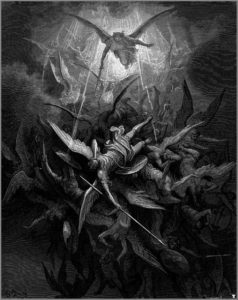 On one side are those who endeavor to respect God’s plan, to acknowledge His existence and His authority, that law and order in society and nature are an expression of His will, and who should rightfully expect others to do so.
On one side are those who endeavor to respect God’s plan, to acknowledge His existence and His authority, that law and order in society and nature are an expression of His will, and who should rightfully expect others to do so.
On the other are those who seek quite the opposite, so much so that as evil is embraced, the blinder they become, and the more dangerous.
Nothing is left sacred and nothing will be spared the chopping block of re-definition: life, liberty, traditions, marriage history, language, holy religion, and nature itself. It is yet another cry of Lucifer’s Non serviam, but always with the same response for those who take the opposing side: the Cross of Christ, from where we learn humility and gain fortitude to resist with the assurance of victory.
Maybe the reason we see so many unhappy people rioting and demonstrating nowadays is because they have been mobilized and distracted to fight the wrong war and, as a result, are losing the war that they are supposed to win.
August 27, 2020

Make Your Voice Heard! New Latin Mass Survey
Here’s a chance to make your voice heard about the Latin Mass as well as your TLM parishes and communities.
The Christus Vincit Foundation is running a nationwide survey on the growth of the Latin Mass in the United States.
From their website:
“Christus Vincit exists to restore the primacy of God in the natural order. We seek, through prudent financial gifts, to assist traditional Catholic parishes strengthen belief in the supernatural through the restoration of sacred liturgy and beauty.”
“The Traditional Latin Mass (TLM) is experiencing a resurgence in the United States. Across the country, new parishes, communities, and orders are forming to meet the growing demand for traditional forms of worship. The Christus Vincit Foundation is interested in hearing how you are involved and contributing to the growth of your parish, community, and the spread of the Traditional Latin Mass in America.”
Take the Survey
August 20, 2020

New FSSP Youtube Channel Launching August 31st
We have some exciting news to share with our FSSP family…we are putting together a brand new Youtube channel!
As the world turns darker and Holy Mother Church faces increasing challenges, the Priestly Fraternity of St. Peter stands in medio ecclesiae–in the midst of the Church–keeping the flame of tradition alive and offering that flame to an ailing world, that all people everywhere might know the light of the risen Christ.
We are creating a space in the international media to serve all mankind just as we have always served our parishioners: to help people go to heaven.
In this new channel, we will be bringing a Thomistic and traditional perspective to the issues of the day. What is at the root of our society’s devaluation of children? How does Catholic teaching align with the ideas of leading traditional and conservative thinkers such as Sir Roger Scruton or Dr. Jordan Peterson? How can young men find direction and be lifted from hopelessness to energetic action? How can busy homeschooling moms turn their ordinary actions into prayer?
Join Fr. Simon Harkins, FSSP and Director of Communications Claudio Salvucci as we begin the conversation on August 31st, featuring Abby Johnson talking about her pro-life work and her recent discovery of the beauty of the sacred liturgy.
August 18, 2020









